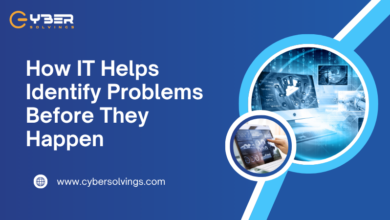In a world increasingly driven by data and automation, businesses and developers are turning to advanced tools that deliver faster, more accurate, and context-aware decisions. Among the standout innovations are RAG AI (Retrieval-Augmented Generation Artificial Intelligence) and Inferencing as a Service—two powerful technologies transforming how organizations interact with data and deliver intelligent outputs.
This blog explores what these technologies are, how they work, and why they are becoming essential for next-generation applications in industries like healthcare, finance, education, and customer service.
What is RAG AI?
RAG AI, short for Retrieval-Augmented Generation, is a technique that combines the strengths of two AI paradigms: retrieval-based and generative models. Instead of generating responses purely from a pre-trained neural network, RAG AI dynamically pulls relevant documents or facts from external databases or sources, then integrates this context into its output.
In simple terms, it works like this:
- Query Input: A user submits a question or task.
- Retrieval Phase: The system retrieves relevant data from a knowledge base or document store.
- Generation Phase: The AI generates a response based on both the original input and the retrieved context.
This approach significantly improves the accuracy, relevance, and explainability of AI-generated responses—especially in knowledge-heavy domains like legal, medical, and enterprise operations.
Why RAG AI is Game-Changing
Traditional large language models are trained on massive datasets but still have limitations. They may hallucinate facts, provide outdated information, or lack the specific knowledge needed for certain tasks. RAG AI solves these problems by enabling the model to consult trusted data sources in real time.
Some notable benefits include:
- Reduced hallucination: By anchoring outputs in verified documents.
- Dynamic knowledge access: No need to retrain the model every time new data is added.
- Contextual accuracy: Answers are more tailored and relevant to the query.
For example, in healthcare applications, RAG AI can pull from the latest clinical trials or medical guidelines to provide more reliable assistance. In finance, it can reference real-time reports or regulatory updates to improve compliance and forecasting.
What is Inferencing as a Service?
Inferencing as a Service refers to the cloud-based deployment of AI models specifically designed to perform inference tasks—i.e., making predictions or generating outputs—based on trained models. Unlike training, which is compute-heavy and often done offline, inferencing is the real-time application of a model to new data.
This model-as-a-service concept allows users to:
- Access pre-trained or fine-tuned AI models on demand.
- Run inference at scale without managing backend infrastructure.
- Reduce latency with optimized hardware and model pipelines.
Whether it’s classifying images, transcribing speech, or powering conversational agents, inferencing is the engine behind real-time AI applications.
How RAG AI and Inferencing as a Service Work Together
These two technologies are complementary in building responsive, scalable, and context-aware AI systems.
Here’s how they integrate:
- RAG AI structures the cognitive process—retrieving relevant information and generating insights.
- Inferencing as a Service handles the heavy lifting—executing these processes quickly, efficiently, and at scale.
In practical deployments, developers can plug RAG platform pipelines into inferencing platforms that provide low-latency, scalable compute. This allows organizations to serve thousands—or millions—of users with intelligent outputs, all without maintaining complex infrastructure.
For instance:
- In e-commerce, such systems can power intelligent search engines that understand customer intent and reference real-time inventory.
- In legal tech, they can deliver document summarization, citation verification, and contract analysis—all in seconds.
Use Cases Across Industries
1. Customer Support
Combine RAG AI with inferencing services to power chatbots that provide context-aware, personalized answers by pulling from your company’s internal documentation or knowledge base.
2. Healthcare
Deploy models that assist doctors by generating summaries from patient records while referencing the latest medical research, all delivered via a cloud-based inference engine.
3. Education
Provide students with AI tutors that dynamically retrieve information from academic sources and generate explanations based on individual learning patterns.
4. Enterprise Intelligence
Enable decision-makers to query complex data systems in natural language and get fast, reliable insights generated using retrieval-augmented reasoning.
Benefits for Developers and Businesses
- Scalability: Handle massive user loads without investing in GPU infrastructure.
- Flexibility: Easily switch models, update datasets, or change configurations via APIs.
- Speed to market: Integrate powerful AI functionalities without long development cycles.
- Security: Use private knowledge bases in RAG workflows to preserve data privacy.
Challenges and Considerations
While promising, these technologies require thoughtful implementation:
- Latency: Real-time applications demand efficient retrieval and fast inferencing pipelines.
- Data freshness: RAG systems depend on regularly updated and indexed knowledge bases.
- Model alignment: Outputs should be aligned with business goals, tone, and domain-specific terminology.
- Cost: Frequent inferencing at scale can incur significant operational expenses if not optimized.
Final Thoughts
RAG AI and Inferencing as a Service are more than just technical advancements—they represent a shift toward AI systems that are grounded, efficient, and production-ready. By integrating dynamic data retrieval with powerful inference engines, businesses can create solutions that are not only smarter but also more reliable and scalable.
As industries continue to adopt intelligent automation, these tools will become foundational to how we build and interact with AI-driven systems. Whether you’re developing a customer-facing app or a complex enterprise dashboard, leveraging RAG and cloud-based inferencing could be the difference between a good product and a transformative one.




